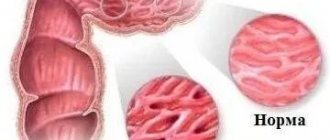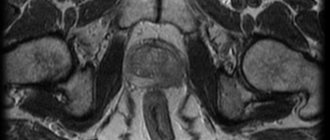There are a number of diseases of the vaginal mucosa. One of them is atrophic colpitis. It is characterized by an inflammatory course, the presence of degenerative changes in different parts of the reproductive system and frequent relapses.
Most often, various forms of atrophic colpitis are diagnosed in women within several years after menopause. However, the incidence is not limited to this age group. Due to various hormonal changes, previous sexually transmitted infections and other factors, the vaginal mucosa can become inflamed in young girls.
Causes of atrophic colpitis
Every woman has a certain vaginal microflora. Normally, the majority of it consists of the so-called Doderlein bacilli - symbiotic bacteria that produce lactic acid. This substance inhibits the proliferation of pathogenic microorganisms.
But the population of these symbionts can sharply decrease due to various reasons. Most often these are hormonal changes, decreased immunity, poor hygiene of intimate places, allergic reactions to contraceptives and medications, as well as other factors.
Atrophic colpitis in women occurs due to the proliferation of different types of pathogenic microflora:
- fungi of the genus Candida;
- genital herpes virus;
- mycoplasma, ureaplasma;
- streptococci and staphylococci;
- coli;
- a group of opportunistic microbes (Proteus, Haemophilus influenzae vaginalis, Escherichia).
But sometimes the disease can develop in the opposite scenario - first, due to mechanical damage or exposure to various agents, inflammation appears, and then infectious agents penetrate the mucosa. To diagnose the pathogen, the doctor may prescribe a smear test using the PCR method (costs from 300 rubles for 1 indicator), an analysis to determine serological markers (this blood test for antibodies costs from 750 rubles). A microbiological study is also possible, its price starts from 1,600 rubles.
Content:
- Risks for the female body
- Causes of the disease
- Manifestation of the disease
- Diagnostics
- Treatment of the disease
Risks for the female body
Inflammation of the vaginal mucosa, represented by stratified squamous epithelium, is called colpitis (vaginitis). Colpitis can be of an infectious nature, and the so-called atrophic one is caused by a non-inflammatory nature. Since female sex hormones influence the state of the epithelium, when their concentration in the body decreases, the vaginal mucosa undergoes dystrophic changes. The disease develops after menopause and is included in the concept of menopause syndrome, often combined with kraurosis (the same atrophic process of the external genitalia). Long-term atrophic changes in the mucosa can progress over time, and they can be joined by secondary bacterial or fungal infection. If you do not take any action, it will be quite difficult to cure the disease. Preventing the development of a disease is always easier than treating the process once it has started.
Causes of the disease
The main reason for the development of mucosal atrophy is an insufficient amount of estrogen in the body. Various factors can lead to this, primarily physiological menopause. Removing the ovaries in young women also leads to the development of artificial menopause and a decrease in hormone levels. This situation may arise in the postpartum period due to the slow restoration of hormonal status in lactating women. Some diseases and drug interventions can also cause atrophic colpitis: primary disorders of the endocrine regulation of the ovaries, radiation or radionuclide therapy, chemotherapy for cancer, neurotic disorders (hysterical and anxiety-phobic neuroses often lead to gynecological problems), diseases of the endocrine organs and many others . The renewal of the epithelium is disrupted, the number of cells decreases, and their sizes also change downward. It undergoes changes in pH, which is very important for maintaining certain conditions for the survival of the necessary microflora. Lactobacilli die at high pH levels, opportunistic bacteria begin to actively multiply and cause an inflammatory reaction in certain areas. epithelium. Predisposing factors for secondary infection are non-compliance with hygiene rules, weakening of the body's defenses due to a chronic disease, frequent sexual intercourse (the mucous membrane becomes very vulnerable, regeneration processes are disrupted), wearing tight underwear, the use of intravaginal drugs and irritants, chronic inflammatory phenomena in the pelvic organs.
Manifestation of the disease
The manifestations of colpitis are pronounced and cause significant discomfort to the woman. First of all, there are sensations of tightness and dryness in the vagina, burning, and there may be severe itching when bacterial inflammation is associated. Due to a decrease in the secretion of fluid that moisturizes the internal genital tract, there may be severe pain during sexual intercourse. This symptom is called dyspareunia. Bloody discharge after sexual intercourse is also not uncommon; it is caused by trauma to the thinned, easily vulnerable mucous membrane. Discharge in an uncomplicated process is normal - it is transparent and presented in small quantities. When infected, leucorrhoea (discharge) can take on any character, which will be determined by the specifics of the pathogen. In this case, discomfort in the vaginal area increases, severe itching and burning appear.
Diagnostics
Diagnosis and treatment of atrophic colpitis is carried out by a gynecologist. there is no need to conduct numerous examinations. A conversation with the patient can already provide the necessary information - characteristic symptoms, a statement of menopause or other conditions that are accompanied by a decrease in estrogen levels. When examined in the speculum, changes characteristic of this disease can be noted - the vaginal mucosa is pale, thinned, with possible hemorrhages and injured areas. The symptom of contact bleeding can be pronounced - touch causes capillary bleeding. If during the examination the doctor identifies pathological leucorrhoea, then a smear is taken for microflora. A study of pH levels indirectly indicates changes in microflora and the presence of inflammation. Colposcopy and colpocytology are also important methods. Depending on the stage of the menstrual cycle and the level of hormones in the body, the composition and other qualities of mucus change. These methods allow us to judge the level of hormones in the body. Other methods are used according to indications.
Treatment of the disease
The main treatment method is drug replacement therapy. Synthetic drugs and more gentle herbal remedies are used systematically. Estrogens can also be used topically to enhance the effect. If a woman has contraindications to the administration of estrogens, then solutions of plants and herbs with an anti-inflammatory effect are used locally.
When is it necessary to contact a specialist?
The symptoms of atrophic colpitis appear quite clearly, causing significant discomfort, pain and general deterioration of the condition. Therefore, the disease almost never goes away without a trace.
The main symptoms of the disease include:
- purulent and mucous discharge, periodically with blood impurities;
- redness and itching of the external genital organs, as well as the mucous membrane;
- pain, discomfort during urination and sexual intercourse;
- impaired performance, feeling of drowsiness and weakness.
If at least two of the listed manifestations occur, you should urgently contact the specialists of the Academy of Health. Our doctor will conduct a visual examination to assess the degree of development of the inflammatory process, and will also take various samples for laboratory tests. Further diagnostics will determine the type of pathogen and prescribe appropriate treatment. Also, the type of disease determines further preventive measures.
Diagnosis of the disease
At the initial appointment, the specialist will collect anamnesis, ask the necessary questions and listen to complaints. He can determine the presence of an inflammatory process through a routine examination. “Senile” colpitis has quite typical signs: pallor of the mucous membrane, the presence of microcracks, pinpoint bleeding, and sanguineous discharge. The presence of purulent inclusions, redness of the vaginal walls and their swelling indirectly indicate the presence of a secondary infection. White plaque and curd-like discharge may indicate the presence of candidiasis. To confirm or refute the assumptions, the doctor will take a smear, the material is sent to the laboratory for cytology and microscopic examination. You will also need to assess the acid balance of the vagina and perform colposcopy: examination of the vaginal surface using optical magnification.
Based on the results obtained, the doctor develops an individual treatment regimen and correction of the condition.
Classification of acute vaginitis
Acute vaginitis is of the following types:
- specific, caused by STDs and tuberculosis. With a combined infection, there are several types of pathogens in the vagina, for example, Trichomonas and gonococcus. Therefore, the ICD-10 classification indicates that code N76.0 includes acute colpitis without further specification (NOS);
- nonspecific, caused by the activation of opportunistic flora: staphylococcus, Proteus, Escherichia coli and Pseudomonas aeruginosa, fungi of the genus Candida. This form of colpitis is caused by a violation of the vaginal microflora;
- non-infectious, occurring due to allergies, sexual intercourse without sufficient hydration, irritation of the mucous membrane with latex, tampons, douching solutions.
Symptoms of colpitis
The characteristics and intensity of symptoms of colpitis may vary. It depends on the duration of the disease and its causes. Regardless of the clinical form of the pathology, the signs are exclusively local in nature. General manifestations - fever, muscle/headaches, weakness, increased fatigue - are possible only with purulent colpitis.
Among the most common symptoms of colpitis:
- Vaginal discharge observed in any phase of the menstrual cycle. In the bacterial form they are abundant, containing gas bubbles. For candidal colpitis - curdled, in the form of flakes. In the trichomonas form, they are dirty green, sometimes foamy.
- Smell. During their life, fungi decompose chemicals (proteins, sugars) and release gases. Because of this, the smell of rotten fish appears (this symptom is not typical for candidal colpitis).
- Mild abdominal pain that gets worse during urination. They are caused by irritation of the inflamed vaginal walls by substances contained in urine. Also, discomfort becomes more pronounced during sexual intercourse.
If you experience similar symptoms,
consult your doctor . It is easier to prevent a disease than to deal with the consequences.
Prevention and prognosis for senile colpitis
The condition for preventing the development of the disease is constant observation by a gynecologist with regular examinations and the prescription of hormone replacement therapy during menopause. In addition to improving the condition of the vaginal mucosa, hormonal drugs reduce the symptoms of menopause and reduce the risk of developing osteoporosis and heart disease.
Nonspecific prevention of postmenopausal atrophic vaginitis comes down to preventing the onset of early menopause. To do this, it is advised to quit smoking, eat rationally, perform dosed physical activity, and avoid stress. For patients prone to developing this disease, it is important to strengthen their immune system, take good care of personal hygiene, and wear cotton underwear.
The prognosis for colpitis is favorable in terms of life expectancy, however, due to the tendency of the disease to relapse, its quality may decrease.
The Consultative and Diagnostic Center (formerly the NDC) in St. Petersburg provides diagnostic and therapeutic assistance to patients with gynecological diseases of various etiologies. Make an appointment with a gynecologist from our call center operators and come for treatment and diagnosis of diseases of the female genital area.








